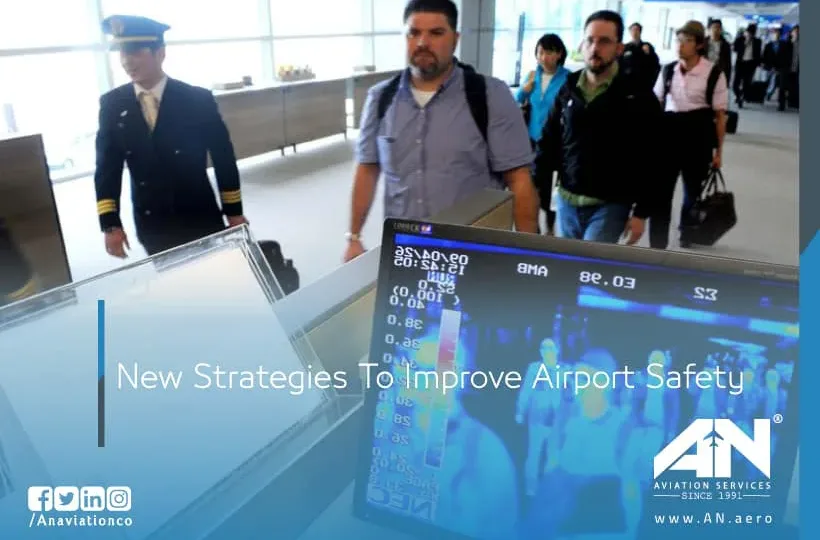
Airport safety is a top priority for the aviation industry, and as air travel continues to grow, so do the challenges associated with maintaining secure and efficient airport operations. From managing ground handling to addressing wildlife hazards, ensuring safety requires a combination of advanced technology, robust safety management systems (SMS), and proactive planning.
The Federal Aviation Administration (FAA) and other regulatory bodies worldwide continuously push for updated strategies and practices to enhance airport safety. With the rapid pace of modernization, airports must implement innovative approaches to ensure the safety of passengers, personnel, and aircraft. In this blog, we’ll explore some of the key strategies being employed to elevate safety in airport operations.
The Role of Safety Management Systems (SMS)
At the heart of improving airport safety is the implementation of safety management systems (SMS). These structured frameworks are specifically designed to identify, manage, and mitigate risks in daily airport operations. An effective SMS ensures that safety is not an afterthought but an integral part of every process, from ground handling to civil aviation security.
An SMS consists of four key components:
- Safety Policy: Establishing clear safety objectives and responsibilities for all stakeholders.
- Risk Management: Identifying potential hazards and implementing measures to minimize them.
- Safety Assurance: Monitoring safety performance and ensuring compliance with regulations.
- Safety Promotion: Creating a culture of safety through training, communication, and awareness.
The FAA mandates the adoption of SMS for many aviation organizations, recognizing it as a critical tool for enhancing safety in complex environments like airports.
Advanced Technology in Airport Safety
Technology plays a vital role in improving airport safety by automating processes, enhancing monitoring capabilities, and reducing human error. Airports are increasingly adopting cutting-edge systems to address challenges in areas such as wildlife hazards, airport security, and ground handling.
Wildlife Hazard Management:
One of the most significant safety risks at airports is wildlife, particularly birds that pose a threat to aircraft during takeoff and landing. Modern strategies for managing wildlife hazards include:
- Radar Systems: Advanced radar technology can detect bird activity near airports, providing real-time data to mitigate potential risks.
- Bioacoustics: Devices that use recorded predator calls or distress signals to deter wildlife.
- Habitat Management: Modifying the surrounding environment to make it less attractive to wildlife, such as reducing water sources or tall vegetation.
Airport Security Enhancements:
Airport security is a cornerstone of overall safety, and new technologies are making it more robust than ever. For instance:
- Biometric Systems: Airports are integrating facial recognition and fingerprint scanning to streamline passenger identification while enhancing security.
- AI-Powered Surveillance: Artificial intelligence is being used to monitor video feeds and detect unusual behavior in real time.
- Automated Threat Detection: Advanced scanning equipment can identify prohibited items in baggage more accurately and quickly than traditional methods.
Proactive Measures in Ground Handling
Ground handling operations are often bustling with activity, involving refueling, baggage handling, and aircraft maintenance. Any oversight in this area can lead to accidents, delays, or damage to equipment. To improve safety in ground handling, airports are adopting several proactive measures:
- Training Programs: Regular training ensures that ground staff are well-versed in safety protocols and equipped to handle emergencies.
- Standardized Equipment: Using uniform and well-maintained equipment minimizes the risk of accidents during operations.
- Digital Checklists: Electronic tools help ground crews adhere to safety procedures without missing any critical steps.
Collaborative Efforts with the FAA
The Federal Aviation Administration (FAA) plays a central role in promoting airport safety through regulations, guidelines, and oversight. Airports and aviation stakeholders collaborate closely with the FAA to ensure compliance with safety standards and to implement new strategies effectively.
Some of the FAA’s key contributions include:
- Runway Safety Programs: Initiatives aimed at reducing runway incursions and improving surface operations.
- Guidance on SMS Implementation: Offering tools and resources to help airports adopt and maintain effective safety management systems.
- Data Sharing: Facilitating the exchange of safety-related data to identify trends and develop preventive measures.
These partnerships ensure that safety remains a shared responsibility across the aviation industry.
The Importance of Safety Culture
While technology and systems are crucial, the human element remains a critical factor in ensuring airport safety. Cultivating a strong safety culture involves encouraging accountability, communication, and continuous improvement among all personnel.
Key aspects of a positive safety culture include:
- Open Reporting: Creating an environment where employees feel comfortable reporting safety concerns without fear of retaliation.
- Regular Audits: Conducting routine safety audits to identify areas for improvement.
- Leadership Commitment: Ensuring that management leads by example and prioritizes safety at every level.
When safety becomes a core value rather than just a compliance requirement, the entire organization benefits.
Conclusion
As airports become busier and more complex, the need for innovative airport safety strategies has never been greater. From implementing safety management systems (SMS) to adopting advanced technologies and fostering a strong safety culture, the aviation industry is taking proactive steps to protect passengers, staff, and equipment.
Collaboration with organizations like the Federal Aviation Administration (FAA) and ongoing investments in training, technology, and infrastructure are driving these efforts forward. By addressing challenges such as wildlife hazards, ground handling risks, and evolving security threats, airports can maintain the highest standards of safety in an ever-changing environment.
Ultimately, the future of civil aviation depends on the industry’s ability to adapt and innovate. With these new strategies in place, airports are well-equipped to meet the demands of modern air travel while ensuring the safety and well-being of everyone involved.

